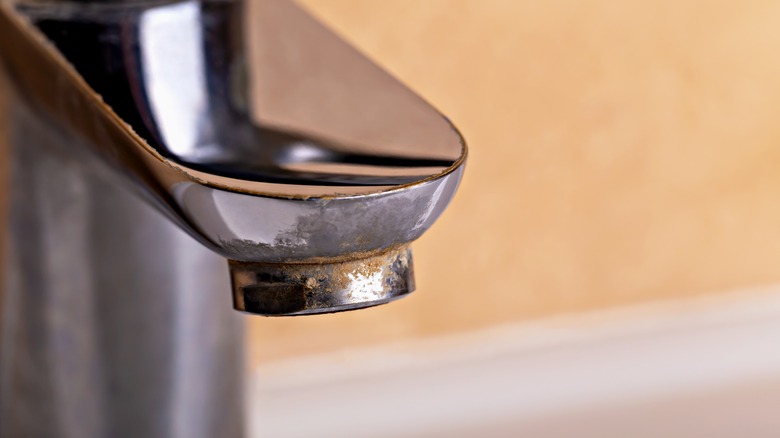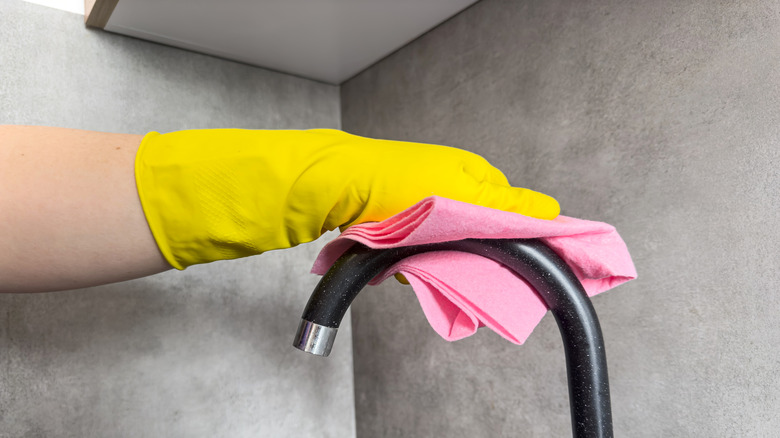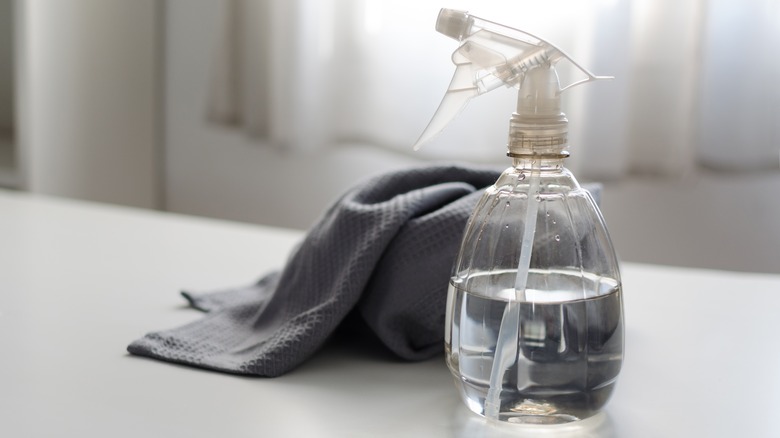The Best Way To Clean & Remove Buildup From Your Kitchen Sink's Faucet
Buildup that develops on your kitchen sink's faucet is usually due to hard water, which leaves a white, chalky residue called limescale on sink fixtures. Initially, it may just be an annoyance, but if you leave it for too long, you can end up with more serious plumbing or water pressure issues. Luckily, there is an easy way to remove buildup from your kitchen sink's faucet with an item you probably already have in your kitchen pantry.
Vinegar can be a versatile cleaning tool for both disinfecting and clarifying various household items, including faucets. Of course, it is important to be aware of proper application methods and safety considerations to ensure you achieve the best results without causing damage. Things you may want to consider include the type of vinegar, the strength of the solution, how long you apply it, and what material your faucet is made of.
How to use vinegar to clean your faucet
Cleaning your sink's faucet is just one of the many ways you can use vinegar to make your kitchen sparkle. But did you know there are different types of vinegar to use that may impact the results? The most common types of vinegar that are used for household projects are cleaning vinegar and white vinegar. Cleaning vinegar is stronger than white vinegar and may prove more effective; however, both options should help to remove limescale buildup. Just remember, cleaning vinegar is not food grade, so avoid mixing it up with your white vinegar.
To clean your faucet with either type of vinegar, you need to first determine what your faucet is made of and the type of finish it has. Some metals may corrode when exposed to vinegar, so they will need to be treated with caution. Also, make sure you have removed any rubber seals from the area you plan to clean, as vinegar can break down rubber.
Then, mix equal parts vinegar and water in a sandwich bag or similar plastic bag. You can also add a bit of baking soda for stubborn buildup. Use a rubber band to secure the bag around the faucet head, submerging the faucet completely in the solution. For sensitive finishes such as nickel or brass, soak for up to 30 minutes. For finishes that are not quite as easily damaged by vinegar, like chrome, you can soak for up to 1 hour. Then, remove the bag and use a sponge or toothbrush to clean away any remaining buildup. Rinse thoroughly and wipe dry with a paper towel or cloth.
Common mistakes to avoid when cleaning with vinegar
As helpful as it can be, it is important to consider the disadvantages before cleaning your home with vinegar. First and foremost: safety. Most people assume that using a natural product means that there is little risk. However, vinegar is still an acidic substance that can cause irritation to the eyes, and even to your skin with higher concentrations of acetic acid. Ventilate the room when working with vinegar solutions, particularly those with cleaning vinegar. For extra protection, wear cleaning gloves to avoid contact with the skin. It is also essential to avoid mixing other cleaning agents, specifically bleach, with vinegar.
Another thing to consider when using vinegar as a cleaning agent is how strong it can be and how well it can break down certain substances. Because of this strength, it can be potentially harmful to part or all of your sink or faucet, depending on the materials they are made of. Some substances to avoid using cleaning vinegar on altogether include cast iron, natural stone, grout, wood, rubber, and stainless steel. If you're unsure, test the solution in an inconspicuous area first.


